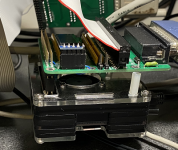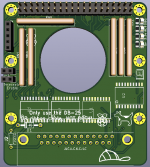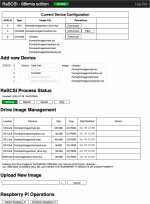With a $37 BOM before the Pi are the economics there for this versus a SCSI2SD? Are there other advantages beside potential future features like potentially Ethernet?
scsi2sd is an awesome product. I'm glad it has taken off as much as it has. I think it serves a different audience.
Ditto to what others said. Its not economics. For me, its just a fun project. I'm not hoping/expecting to make any money or have this be a big project. I would guess that most of us on this forum don't work with 68k Macs because we NEED to, but because we want to. For me, this allows me to apply some of my embedded software interests to my love of the 68k Macs. :lisa2:
For me, its not just the hd emulation potential of this device, but the other things we
could do with it in the future.
- I'm really hoping to add a HTML 1.0 interface so that you can control the emulated CD-ROM. You could upload all of your ISOs to the Raspberry Pi and use the web interface to switch disk images. I haven't dug into it enough, but does scsi2sd allow you to change CD images?
- Ethernet has been done with the scuzzynet board (also very cool). But, again, it'd be awesome to integrate that functionality into the same system.
- I'm imagining that zip drives are going to start failing in the next few years, so I'd like to have some sort of emulated "removable" storage capabilities.
- GIMONS (the original developer) write a driver that allowed the X68000 to directly access the Linux file system. If we can duplicate this concept, you could use the RaSCSI to access NFS and/or network shares that normally aren't accessible to classic Macs.
- (Crazy long term goal) Emulating one of the SCSI display adapters would be awesome. You could theoretically use the Raspberry Pi as an additional display for the all-in-one Macs.
One note on the economics.... I've been researching Asian parts suppliers, and I believe I can get the price down
substantially. Maybe 50%? Its just going to take longer to get them. For small builds, it was more economical to buy from a US supplier and pay the higher prices.






